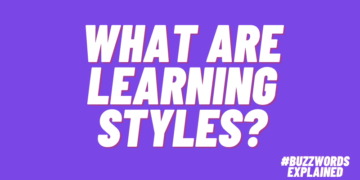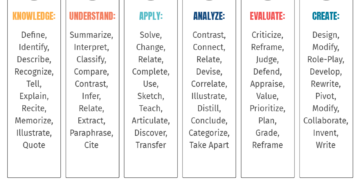Beyond The Average Soft Skills Training Solution
Budgets for human talent development are often limited and must be executed within tight deadlines and short-term objectives. These conditions make it difficult to acquire training solutions that will be effective. While the budget may be spent in time, the performance issue may not be solved successfully. This is often the case with soft skill training. To address this issue, this article presents four perspectives, to help you identify market training solutions that work for interpersonal skill challenges.
The most common and low-cost type of training for soft skills challenges use lists of recommendations, presented in a didactic and entertaining manner. These solutions check the memorization of concepts, facts, and data, with true-and-false questions and multiple-choice options. The grade obtained becomes the KPI to measure training success among learners. While grades are sufficient to assess the learner’s knowledge of company policy, such types of training do not work for poor communication or lack of empathy, among other soft skills. Performance problems associated with soft skills require a behavioral change approach in a training solution.
Several studies in the field of learning science have shown that telling a person what they need to know for doing something specific does not help to change their behavior. It does not promote the modifying or integrating of the desired behavior. Delivering recommendations so that employees retain what they need to do, or need to not do, often keeps a soft skill performance problem unsolved. In addition, grades, in such cases, are frequently misleading about the reality of the failure of the learning process promoted by this training program.
Learning To Develop Interpersonal Skills
Most of the time, training solutions for soft skills are designed from PowerPoint presentations inside the organizations. These presentations often consist of a list of behaviors and practical actions for learners.
However, learners may not know how to face the how-tos, such as how to apply problem-solving advice, how to give opinions respectfully, how to set expectations politely, etc. This lack of understanding occurs because learners need to participate in activities that activate comprehension, so they can give meaning to the information.
Giving meaning means learners need to participate in activities that trigger one specific set of skills. This set includes critical thinking, reflection, synthesis, making decisions, and exposition of the consequences of choices concerning the training information. These five actions trigger comprehension at a higher level and allow the changing, nurturing, and neutralizing of behaviors.
Experience: An Essential Element In Effective Training Solutions For Soft Skills
From amongst a broad group of learning theories, the situated learning theory and the experiential learning theory provide insights into how learning experiences promoting higher-order thinking are designed. Both of them highly value the experience approach as an essential element to prioritize when navigating the universe of human talent training solutions. When outsourcing to address interpersonal skills challenges, be aware of whether the training solutions you’re considering have the following characteristics.
The Theory Of Situated Learning [1]
Principles
- Learning activities are designed based on real, day-to-day problems that recreate elements, situations, and actors to which the learner is regularly exposed.
- The learner is invited to act as an expert, using their natural beliefs, reasoning, and behaviors, and later confronted with new information.
- Knowledge is acquired in real and meaningful contexts for learners, and can only be transferred to similar situations.
- Feedback comes from reflecting on the behaviors of others and the learner’s decisions to solve the problems posed. Thus, learning is a social activity.
The science behind the theory [4]
- Science has shown that learning from the mistakes and successes of others makes learning more efficient than solving a problem individually.
- The learning that comes from seeing the choices others make and the results they get, whether positive or negative, give the learners extra information to make decisions.
- From a neurological perspective, the above process is related to how the brain is constantly predicting the possible outcomes of present actions. It does so by creating expectations and contrasting them with what happens. When the prediction does not come true, the brain processes it as an error and learns from it, updating the information it already has with new information. This process constitutes a learning moment.
Experiential Learning Or “Learning By Doing” [3]
Principles
- Learning occurs in practical experiences, through reflection on the decisions and consequences experienced by the learner.
- Learning activities are hands-on experiences and promote analysis, critical thinking, and synthesis.
- Learners obtain feedback on their actions through a story, a social situation, or an emotional context.
- Learners must respond to and accept the challenge, and behave with spontaneity in a new, novel, learning place or space that involves unpredictability and experimentation [1].
The science behind this theory [4]
- Considering that the brain is constantly making predictions and learning when it fails, “learning by doing” allows the learner to access immediate feedback to correct their choices and obtain different results.
- Feedback is obtained from the consequences of the choice, which can be perceived by the learner as punishment or reward. If the consequence is not the desired one, the brain understands it as punishment. On the other hand, if the result is the desired one, it is understood as a reward.
- The brain processes punishments and rewards and then generates predictions about the potential results of a specific action. Thus, the learner either reinforces a behavior, or avoids it.
Effective Activities For Training Solutions For Soft Skills
Learning experiences using these two theories include different activity formats for face-to-face, blended, and virtual training programs. The most popular include activities such as:
- Role-plays
- Scenario-based learning
- Group activities
- Case studies
- Simulated-based learning activities
- On-the-job training (OJT)
Today’s technology allows us to explore and innovate in the design of organizational training activities, so more formats will be available. Artificial Intelligence (AI) language models, such as GPTChat, will also contribute to the accelerated expansion of training services and products for organizations from a content perspective, and probably also from a design approach.
What Is Next?
Now that you know these principles and theories, you can dive into the training market and make strategic decisions when purchasing a solution that allows your team and your organization to overcome any soft skill challenges.
Sources:
[1] Bloom’s taxonomy of cognitive learning objectives
[2] Koschmann, Timothy. 2011. Theories of Learning and Studies of Instructional Practice. New York: Springer.
[3] Thomas Howard Morri. 2020. “Experiential learning–a systematic review and revision of Kolb’s model.” Interactive Learning Environments 28 (8): 1064-77.
[4] Hajcak, G. 2012. “What We’ve Learned From Mistakes: Insights From Error-Related Brain Activity.” Current Directions in Psychological Science 21 (2): 101–106.




















